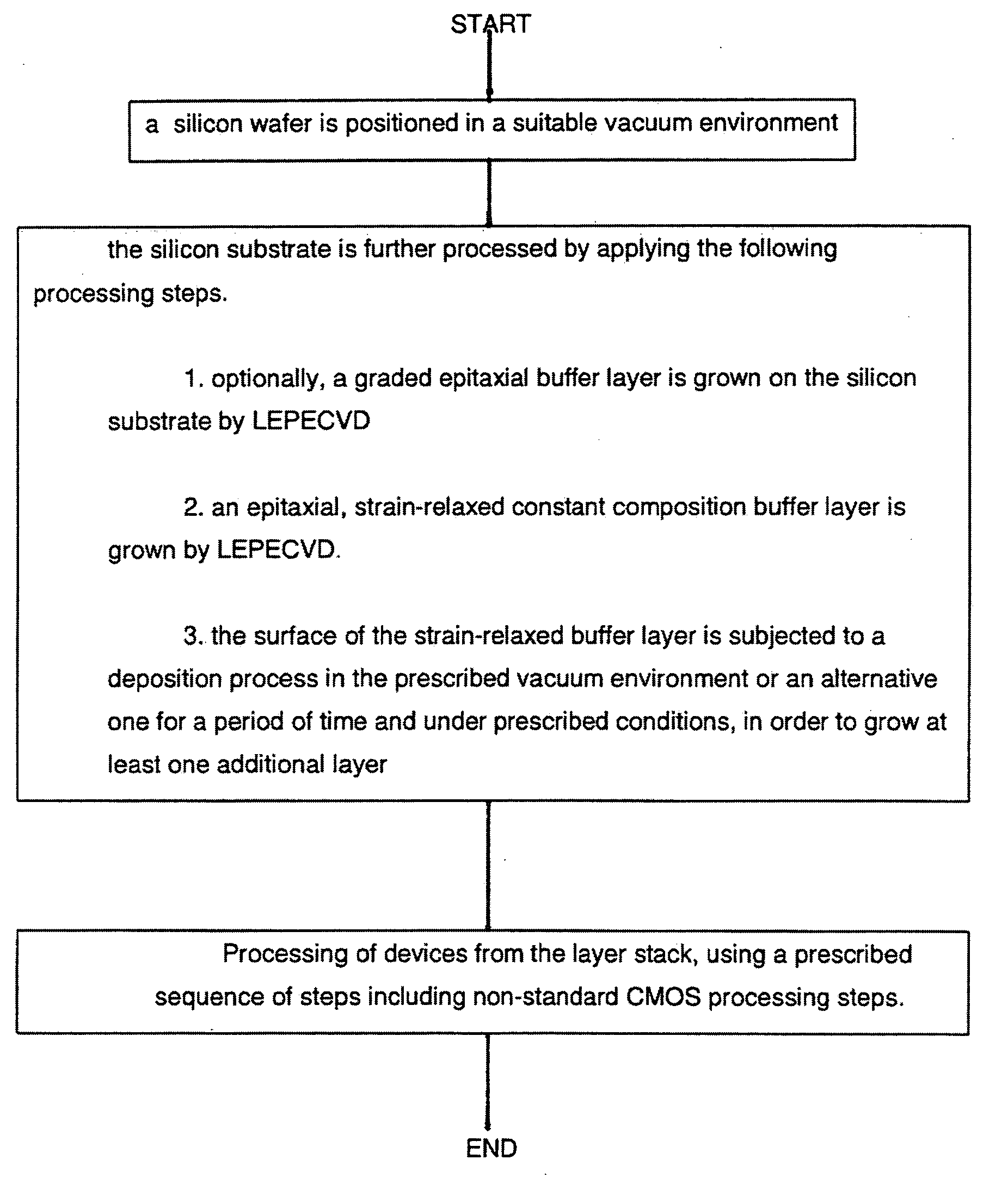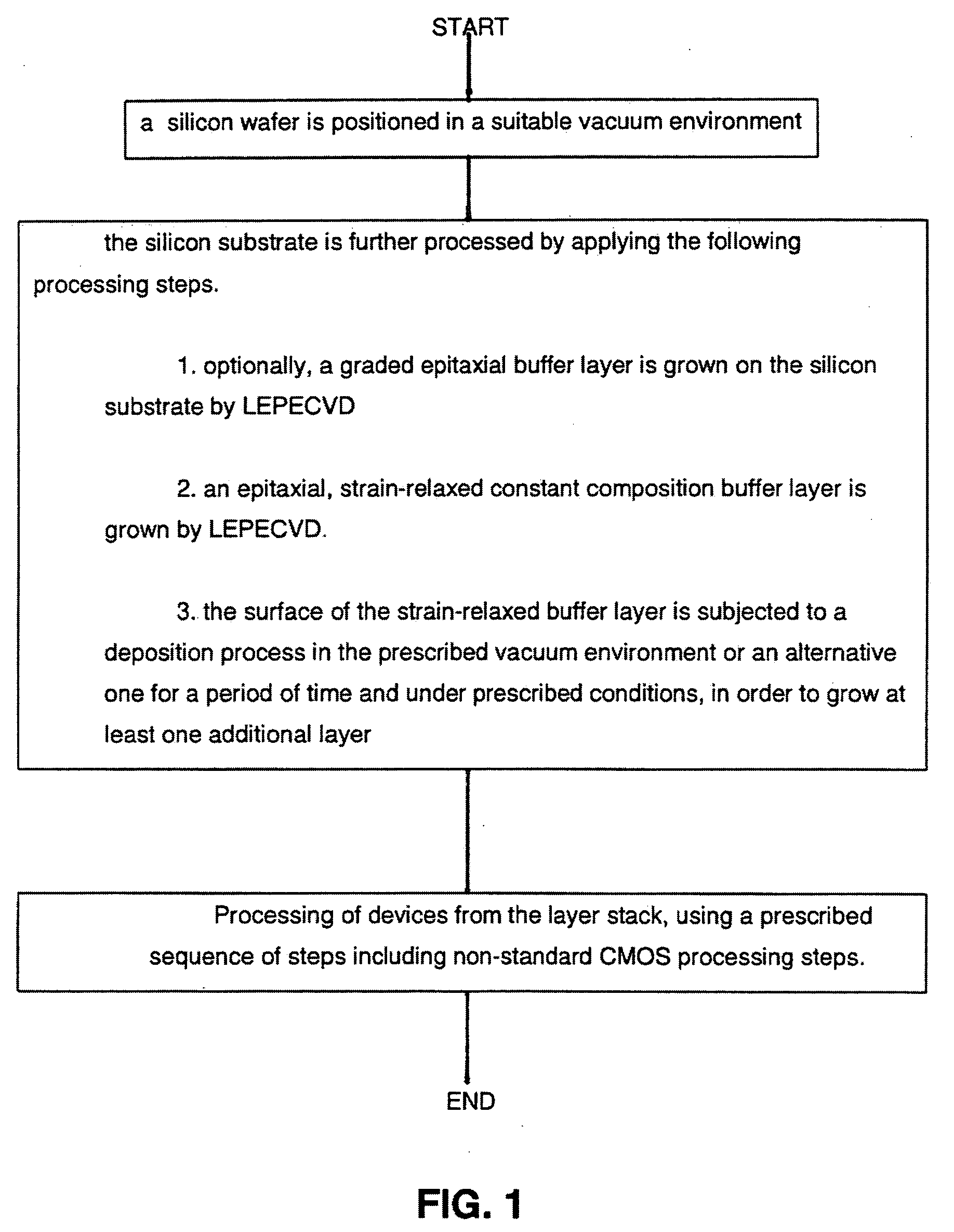Fabrication of MOS-gated strained-Si and SiGe buried channel field effect transistors
- Summary
- Abstract
- Description
- Claims
- Application Information
AI Technical Summary
Benefits of technology
Problems solved by technology
Method used
Image
Examples
Embodiment Construction
[0036] Referring now to FIG. 1, a method is provided for fabricating semiconductor heterostructures. The method includes the following three steps. In a first step 4, a silicon wafer is positioned in a suitable environment, such as a vacuum chamber equipped with a substrate heater and components suitable for epitaxial layer deposition. In a second step 6, the silicon substrate is further processed by applying several processing steps. In a first optional processing step 6a, an epitaxial graded buffer layer is grown on a the silicon substrate by low-energy plasma-enhanced chemical vapor deposition (LEPECVD). In a second processing step 6b, an epitaxial strain-relaxed constant composition buffer layer is grown by LEPECVD. In a third processing step 6c the surface of the strain-relaxed buffer layer is subjected to a deposition process for a period of time and under prescribed conditions, in order to grow at least one additional layer. In a third step 8, device processing is carried out...
PUM
 Login to View More
Login to View More Abstract
Description
Claims
Application Information
 Login to View More
Login to View More - R&D
- Intellectual Property
- Life Sciences
- Materials
- Tech Scout
- Unparalleled Data Quality
- Higher Quality Content
- 60% Fewer Hallucinations
Browse by: Latest US Patents, China's latest patents, Technical Efficacy Thesaurus, Application Domain, Technology Topic, Popular Technical Reports.
© 2025 PatSnap. All rights reserved.Legal|Privacy policy|Modern Slavery Act Transparency Statement|Sitemap|About US| Contact US: help@patsnap.com



